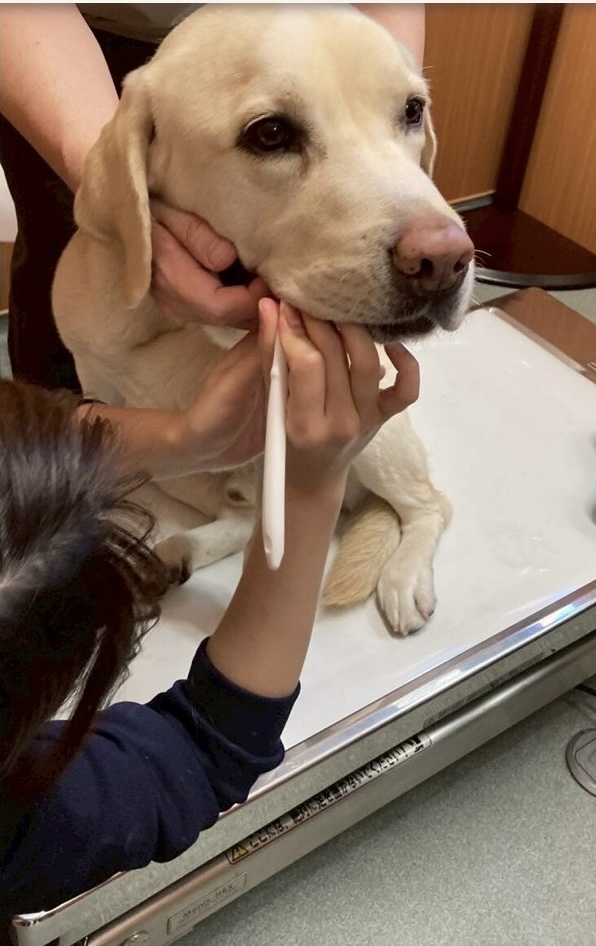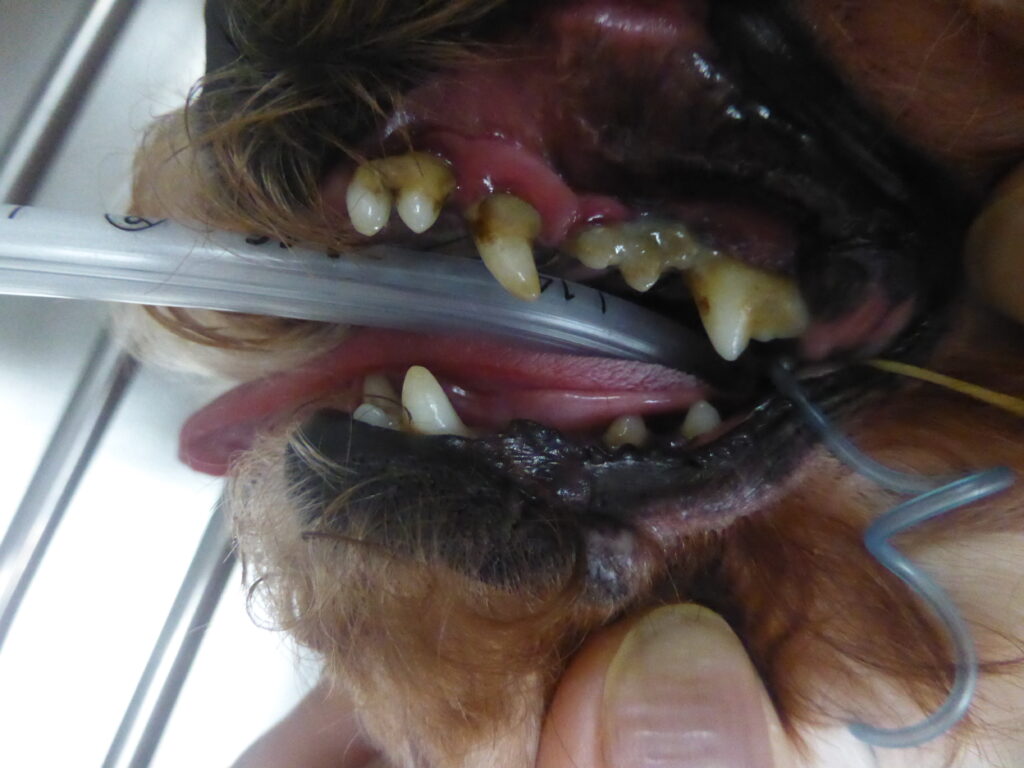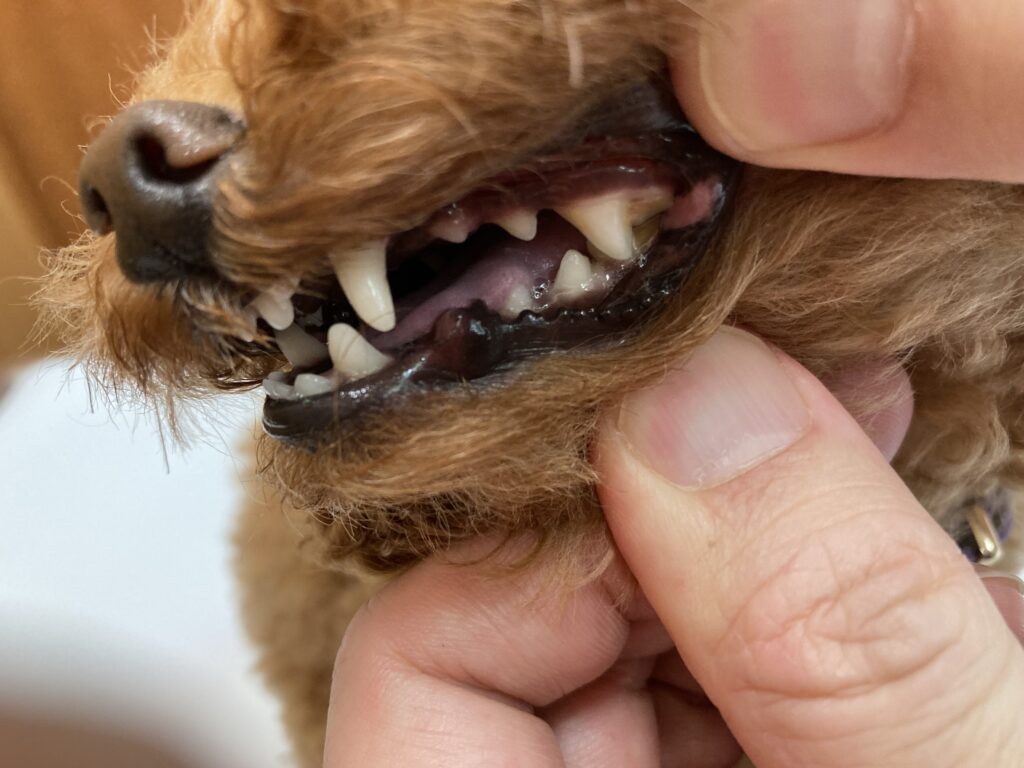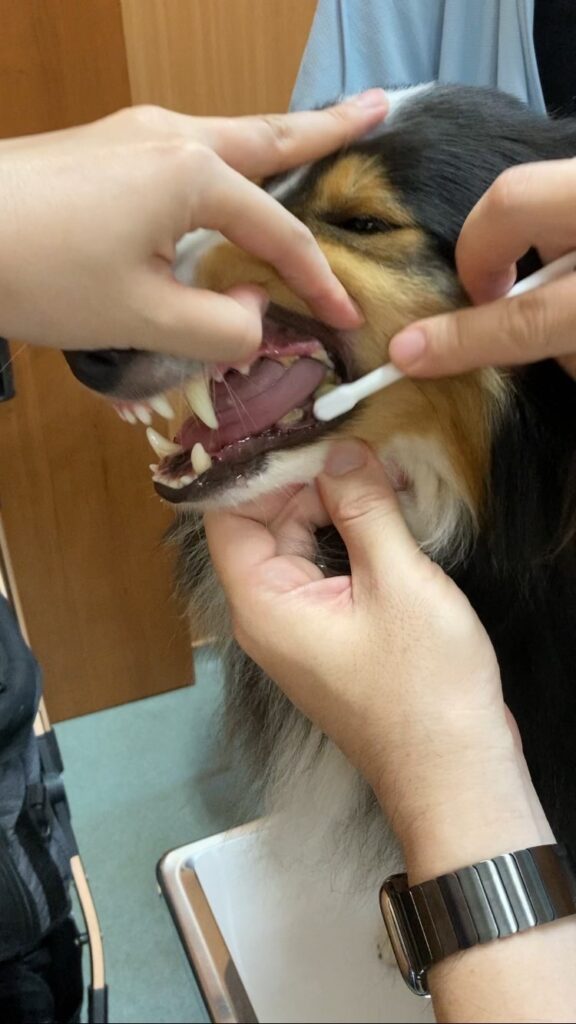Are You Brushing Your Dog’s Teeth Properly?

Interviewer:
Today, we’d like to talk about something that often gets overlooked—brushing your dog’s teeth.
Dr. Muratani (Director, Anima Animal Hospital):
Thank you. This is a truly important topic—perhaps more important than many realize.
Interviewer:
We often hear pet owners say, “I try, but my dog hates it, and I’m not even sure I’m doing it right.” What’s really going on in most households?
Dr. Muratani:
Many dogs aren’t used to having their mouths touched, so they resist. Some won’t even let you see their teeth. And that’s why a lot of pet owners eventually give up.
Interviewer:
That’s very common.
Dr. Muratani:
If a dog hasn’t been conditioned to accept having their mouth touched from an early age, it becomes a real challenge later. From what I see in my practice, less than 20% of pet owners are brushing their dogs’ teeth properly.
Interviewer:
Less than 20%? That low?
Dr. Muratani:
Yes. But just because many people aren’t doing it doesn’t mean it’s okay to skip it. The biggest mistake is starting straight away with a toothbrush. That overwhelms both the dog and the owner. Instead, begin by letting your dog lick a dental gel or gently wiping their teeth with a dental sheet. Rushing into brushing often leads to frustration—and ultimately, people give up.
Interviewer:
You mentioned earlier that this is a crucial topic. What happens when brushing is infrequent or not done properly?

Dr. Muratani:
First, it’s essential to understand the difference between plaque and tartar.
Interviewer:
Plaque is the soft buildup, and tartar is the hardened version?
Dr. Muratani:
Exactly. After meals, food residue forms plaque on the teeth. If left untreated for 24 to 48 hours, it hardens into tartar.
Interviewer:
So tartar forms in just a day or two?
Dr. Muratani:
Yes, and while brushing can remove plaque, it cannot remove tartar. Think of tartar as a hardened cluster of bacteria.
Interviewer:
That makes daily brushing sound non-negotiable.
Dr. Muratani:
It truly is. Just one good brushing a day can significantly reduce tartar formation. Left alone, tartar can lead to periodontal disease, bone loss, and even systemic infections as the bacteria enter the bloodstream. It’s not just about the mouth—it affects the entire body.
Interviewer:
I see now why you said this was such an important issue…
Dr. Muratani:
There used to be a commercial in Japan that said, “Celebrities live or die by their teeth.” Well, I think dogs do too.

Interviewer:
So how should someone start? Can they just bring their dog in to be checked?
Dr. Muratani:
These days, people usually turn to the internet first. But online, accurate and inaccurate information are mixed together.
Interviewer:
Yes, the more you research, the more confusing it gets.
Dr. Muratani:
We call that “Dr. Google.” Sure, some correct advice exists, but there’s plenty of misinformation too. Unfortunately, there are a lot of “quack doctors” online.
Interviewer:
Even online vets can be sketchy, huh?
Dr. Muratani:
Exactly. If you’re ever unsure or just curious, please don’t hesitate to come to a real clinic. Vet hospitals aren’t just for emergencies or vaccinations—they’re also here for routine care like dental checks or even weight monitoring.
Interviewer:
So like a family doctor—for dogs.
Dr. Muratani:
Yes. But I understand—people often think clinics are only for when something’s wrong. That perception needs to change. If you stop by on your regular walk, your dog starts to associate the clinic with positive experiences.
Interviewer:
So you’re saying to make the animal hospital part of the walk?
Dr. Muratani:
Exactly. But that also means we, as clinics, need to work harder to be approachable. Instead of a place where people sit anxiously, we try to create an environment more like a friendly café—warm, relaxed, and filled with smiles.
Interviewer:
I love that. Like a dog café with medical perks!

Interviewer:
To wrap up, what’s your top advice for helping owners and their dogs enjoy toothbrushing together?
Dr. Muratani:
The first step is helping your dog get comfortable with having their mouth touched. Don’t start with a toothbrush—start with a tasty dental paste and get them used to the sensation. The goal is to make it a fun experience.
Dr. Muratani:
If it feels like a chore or punishment, the dog won’t cooperate. You have to take it slow and build up in stages—rushing never works.
Interviewer:
So it’s like a “pre-brushing” phase. Anything else?
Dr. Muratani:
Yes—find a brushing buddy! A friend, a neighbor, even someone from the dog park. Sharing tips and struggles helps tremendously.
Interviewer:
That’s great advice, but some people may not have dog-owning friends…
Photo 5: A brushing session with 8020 CLUB members
Dr. Muratani:
That’s why we started the 8020 CLUB here at Anima Animal Hospital!
🖥 Website
It’s a members-only dental care group where pet owners support one another, share advice, and get proper guidance from veterinarians. It’s a space for learning and encouragement.
Interviewer:
It sounds like a dental version of a fitness club—everyone needs a coach and workout buddy to stay motivated.
Dr. Muratani:
Exactly! That’s why I created 8020 CLUB. People often join a gym but struggle to keep it up alone. With monthly coaching and a sense of community, our members actually look forward to brushing time. The first group filled up fast, and we’re now accepting reservations for our second round.
Interviewer:
It’s such a fun and practical idea—I can’t wait to hear more. Let’s dive deeper into 8020 CLUB in our next article. Thank you so much for today!
⸻
ANIMA ANIMAL HOSPITAL is committed to providing up-to-date health information and care for Tokyo’s pet community. Follow us for more seasonal tips and veterinary insights.
our website: https://www.anima-ah.com/
